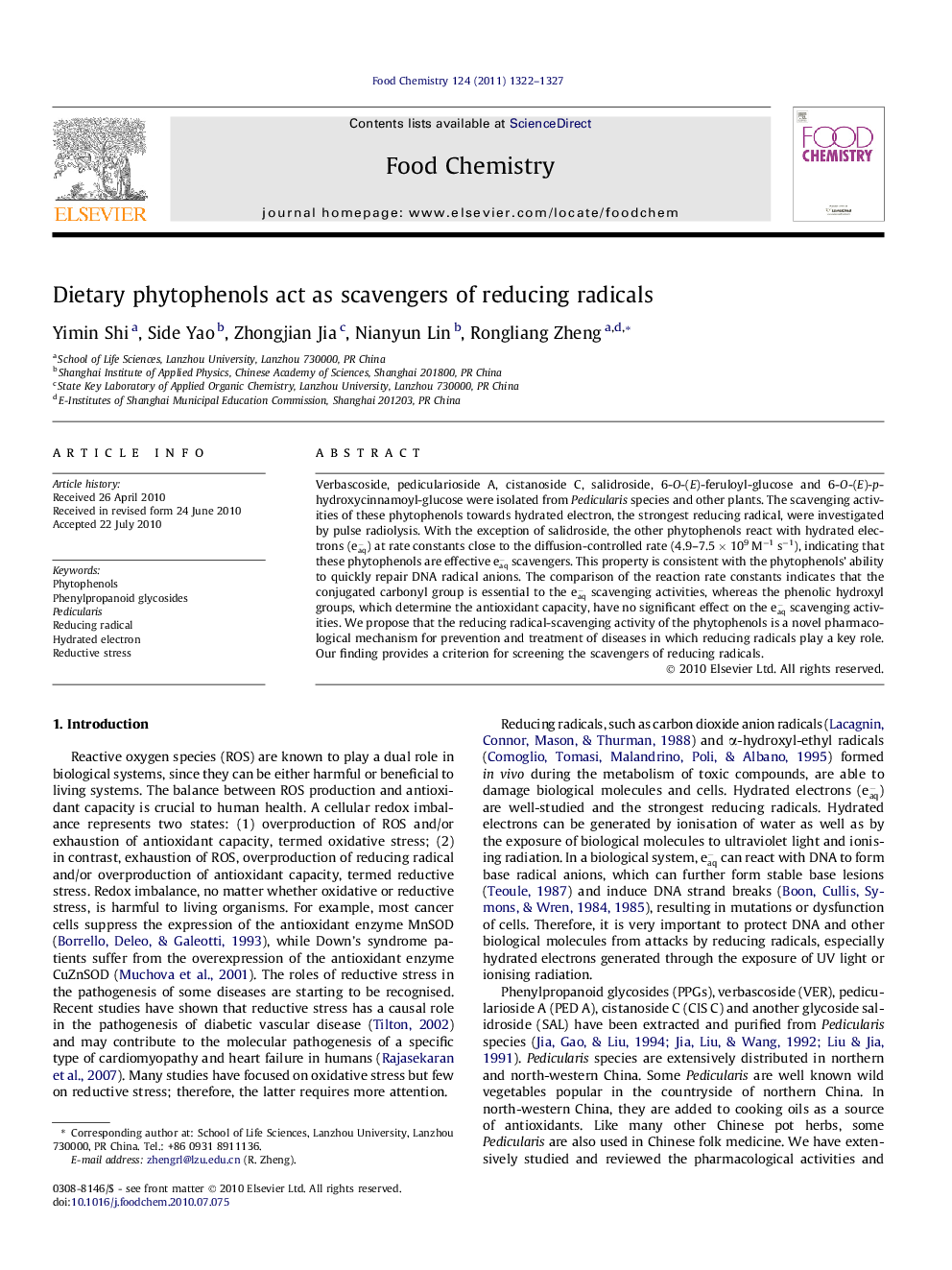| Article ID | Journal | Published Year | Pages | File Type |
|---|---|---|---|---|
| 1189885 | Food Chemistry | 2011 | 6 Pages |
Verbascoside, pedicularioside A, cistanoside C, salidroside, 6-O-(E)-feruloyl-glucose and 6-O-(E)-p-hydroxycinnamoyl-glucose were isolated from Pedicularis species and other plants. The scavenging activities of these phytophenols towards hydrated electron, the strongest reducing radical, were investigated by pulse radiolysis. With the exception of salidroside, the other phytophenols react with hydrated electrons (eaq-) at rate constants close to the diffusion-controlled rate (4.9–7.5 × 109 M−1 s−1), indicating that these phytophenols are effective eaq- scavengers. This property is consistent with the phytophenols’ ability to quickly repair DNA radical anions. The comparison of the reaction rate constants indicates that the conjugated carbonyl group is essential to the eaq- scavenging activities, whereas the phenolic hydroxyl groups, which determine the antioxidant capacity, have no significant effect on the eaq- scavenging activities. We propose that the reducing radical-scavenging activity of the phytophenols is a novel pharmacological mechanism for prevention and treatment of diseases in which reducing radicals play a key role. Our finding provides a criterion for screening the scavengers of reducing radicals.
